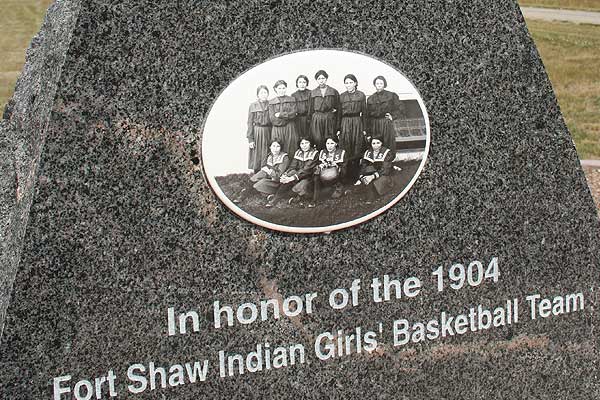 March brings madness to the entire United States, where fools everywhere pay more attention to their NCAA college basketball bracket than Louis L’Amour’s birthday.
March brings madness to the entire United States, where fools everywhere pay more attention to their NCAA college basketball bracket than Louis L’Amour’s birthday.
Criminy, people should be thinking baseball; it’s spring training, when even the inept Houston Astros have a chance at a winning season. Plus, the Spur Awards—which have nothing to do with NBA All-Star Tim Duncan—will be announced by Western Writers of America.
For the record, I hate basketball. James Naismith’s invention was sacrilegious to peach baskets everywhere.
Sure, basketball has many Western connections, but I don’t like the University of Kansas. “Rock Chalk, Jayhawk!” What kind of cheer is that? UCLA Bruins? Arizona Wildcats? The Lakers? The Mavericks? Bah, humbug. I hate everything about basketball.
Except…
I have come to Fort Shaw, Montana, which is in the middle of nowhere, about 30 miles west of Great Falls. Great Falls is in the middle of nowhere, too, unless you are heading to Glacier National Park or are a Charlie Russell groupie.
My pal Happy Jack Feder, my son and I are here to pay tribute to one of the West’s greatest sports stories. Certainly, this is my favorite basketball story, about the only basketball team I will ever admire. The Fort Shaw Indian Boarding School should be a Western and sports legend.
In 1903, Fort Shaw’s girls’ basketball team won the state championship, but the coach—and the girls—wanted more. The next year, those kids traveled to St. Louis, Missouri, for the World’s Fair.
There, they cooked and ironed, recited from “The Song of Hiawatha” and showed visitors just how well boarding schools turned Indians white. Nothing to be proud of, right? They even went on a Ferris wheel ride with Geronimo. Ah, but they also played hoops, teaching white shooting guards and centers a thing or two.
The St. Louis Globe-Democrat called the girls, who represented at least two states and seven tribes, “streaks of lightning.” Teams from Illinois and Missouri—which even today still field some solid hoops teams—challenged those Longfellow-spouting Indians to play ball. It wasn’t exactly Little Big Horn II, but Fort Shaw beat Illinois, 14-3. They beat Missouri twice, 24-2 and 17-6. They left St. Louis as world champs.
Yet few people remember those heroic girls. Another reason to hate basketball. Oh, some folks have made efforts to honor them. My friend Happy wrote a novel, “Shoot, Minnie, Shoot!,” and has been trying to get it turned into a movie. Around the 100th anniversary of Fort Shaw’s world title, PBS produced a documentary, Playing for the World: 1904 Fort Shaw Indian Girl’s Basketball Team. Linda Peavy and Ursula Smith wrote a nonfiction book, Full-Court Quest: The Girls from Fort Shaw Indian School, Basketball Champions of the World. And Fort Shaw is home to a monument paying tribute to the team.
Happy and us Boggs boys, however, are the only ones at the site. After all, this is Montana, where among sports fans basketball—especially girls’ basketball—probably doesn’t rank up there alongside fly-fishing and elk-poaching.
Just how good were those Fort Shaw girls? I ask Happy if they could have beaten the Lakers.
“They might not have beaten the Lakers,” he says, “but would have left some bruises. A grandson of the coach told me they tied lead weights into their braids and snapped them at opponents. Kobe Bryant might have sported a gold tooth after playing them.”
Of course, Happy tells me, once coaches discovered that little trick, the girls were forced to cut their hair short.
Darn it, just when I was starting to like basketball.
Although he coaches a Little League Baseball team, Johnny D. Boggs’s favorite sport is poker, but only when he holds a really good hand.






